






Astriking statistic recently caught my attention: employees are three times more likely to be using generative AI today than their leaders realise. This gap reveals something crucial, employees are anticipating that AI will transform their work lives. The pressing questions become: How are leaders investing in their people to thrive in this AI-powered future? And what pivotal role can HR play in bridging this awareness divide? These questions form the heart of this issue. We explore how HR can prepare itself to be future-ready, not just for its own evolution as a profession but also in guiding the leaders and employees it serves. In an era of rapid technological advancement, shifting market dynamics and growing demands for workplace flexibility, HR professionals face the critical challenge of unlocking workforce potential like never before.
Inside, you’ll find valuable updates from Jacinta Schultz, HRNZ’s Technology Transformation Lead, who explains the latest tech initiatives to support HRNZ members in building capability in this space. Julia Shallcrass offers practical strategies for maximising the strengths of multi-generational workforces. Chelsea Mapp, HRNZ’s Professional Accreditation Manager, provides a fresh perspective on leveraging professional accreditation during these changing times. And I spotlight two forward-thinking organisations taking bold initiatives to future-proof their workplaces.
Our regular contributors return with essential updates on employment law, immigration developments, and other critical HR domains. As a special highlight, HRNZ President Kavita Khanna shares her tongue-incheek yet genuinely helpful
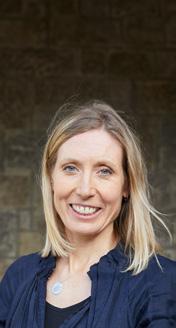
guide to applying for Chartered Membership.
The future isn’t coming, it’s already here. But it’s never too late to expand your knowledge and apply these insights to your HR practice. That’s exactly what this magazine aims to help you achieve.
Kathy Young
Editor
Kathy.Young@hrnz.org.nz
EDITOR
Kathy Young
Ph: 021 0650 959
Email: kathy.young@hrnz.org.nz
ADVERTISING & SPONSORSHIP
Nikita Barends
Ph: (04) 802 3954
Email: nikita.barends@hrnz.org.nz
MARKETING & COMMUNICATIONS
Georgia Wormald
Ph: (04) 499 2966
Email: georgia.wormald@hrnz.org.nz
DESIGN
Jen McBride, Jn Creative
Email: jen@jn-creative.co.nz
PROOFREADER
Jenny Heine
Email: jenny@heine.co.nz
SUBSCRIPTION ENQUIRIES
Email: comms@hrnz.org.nz
PUBLISHER
Human Resources is published quarterly by Human Resources New Zealand PO Box 11-450, Wellington Ph: 0800 247 469
comms@hrnz.org.nz
hrnz.org.nz
nz.linkedin.com/company/hrnz
instagram.com/hrnzphotos
The views expressed in Human Resources are not necessarily those of Human Resources New Zealand, nor does the advertisement of any product or service in this magazine imply endorsement of it by Human Resources New Zealand.
Copyright © Human Resources New Zealand Inc. Vol 30 No: 2
ISSN 1173-7522
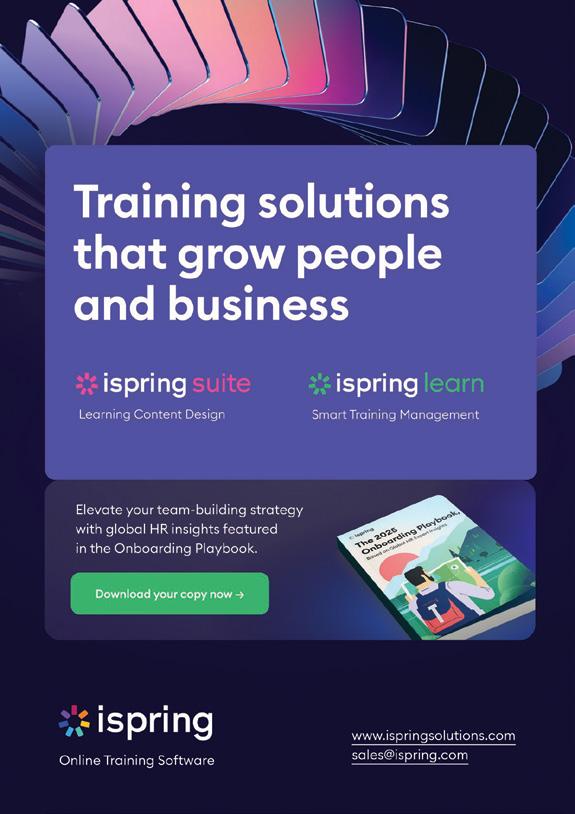

“ I never think of the future –it comes soon enough.
Albert Einstein
“ Map out your future – but do it in pencil.
Jon Bon Jovi
This issue of Human Resources magazine is all about future-ready HR. I wanted an inspirational quote about the future to kick my column off and came across these from Albert Einstein and Jon Bon Jovi, quite different perspectives, you’d think. When I considered their quotes more carefully, I decided they were probably driving at the same point. You can plan for the future, but it’s going to be here quicker than you think and probably won’t look exactly the way you expected.
For many people at the moment, thinking about the future is a bit of a luxury. There are plenty of challenges just to get through the day or week, and we are greeted by some pretty grim news headlines every day. When we do turn our minds to the future there are many hard things to consider: the evolution of AI, climate change or even just our own retirement plans. Thinking about the future can be quite challenging but I recently stumbled upon a good way to start, quite by accident.
My wife bought me a subscription to Storyworth as a Christmas present. What this consists of is that every week, I am provided with a question about my life, and I write a wee story in response. The questions are about my childhood, interests, career, family and many other things. At the end of the year, all of these stories are assembled into a book, which can be kept as a keepsake and shared with family. You can include photos with your stories and create a nice album of memories.
Initially, it seemed like a bit of a chore to write a new story every week, but I’ve come to realise that this process of quiet reflection is actually quite
energising. I’ve reflected on the things I have achieved in life, the passions I had hoped to pursue and the lessons I’ve learned along the way. These reflections have caused me to want to reignite some old passions and make sure I get better at using my future time on the things that matter to me in life. Who knew that looking back was so important to helping you move forward?
We get this same feedback from many of our members who decide to progress their applications for Chartered Membership. The process requires reflection on things you’ve achieved and what you’ve enjoyed about your work in HR. Some of our best experiences can happen early in our careers and be the things that have spurred us into the careers we have today. By reflecting on these past experiences, we can regain energy for our next steps and maybe identify how we want to develop our talents and make a difference in the future.
The overriding message is that, to be future-ready, you need to understand the journey that has brought you to where you are. At the end of the day, your future can only be written by you.

32 Boomers to Zoomers: Why Generational Engagement Matters
Julia Shallcrass, Employment Lawyer and Kiwiboss HR presenter, provides practical strategies for engaging the fivegenerational workplace
36 Building Capability for a New Era
Jacinta Schultz, HRNZ’s Technology Transformation Lead, explains the latest tech initiatives happening to support HRNZ members build capability in this space
40 The Path to Professional Growth
Chelsea Mapp, from HRNZ, shares how The Path, HRNZ’s professional capability framework, is at the heart of a growing suite of development opportunities for members
44 Future-proofing Your Workforce
Editor Kathy Young spotlights two organisations taking bold steps to secure the future of their workforces




1 From the Editor
Kathy Young
3 Top of Mind
Chief Executive Nick McKissack shares his thoughts
8 Quick Reads
The latest updates to keep you current in the world of HR
10 40 Years, 40 Stories
We reminisce on some of the stories of HRNZ’s 40-year journey
14 Accredited Members
HRNZ caught up with a newly accredited Chartered Member and Accredited Member, to share their career highlights and insights
16 Employment Law Update
“Theft is theft” – Jack Rainbow, Dundas Street Employment Lawyers, outlines the new Crimes (Theft by Employer) Amendment Bill
18 Sustainability and HR
The future is calling. Is HR picking up? – Izzy Fenwick lays down a challenge to teams stuck in business as usual, while the world of work changes around them
20 Research Update
Embracing the human–AI partnership – Azka Ghafoor from Otago University summarises her findings on how AI and people can thrive together
22 Diversity, Equity and Inclusion
Harnessing neurodiversity as a competitive advantage – Jenny Turner looks at why organisations that embrace different ways of thinking will optimise performance
24 Immigration Law Update Changes to work visas, but watch the clock!
– Rachael Mason, Lane Neave, provides further updates on recent changes in the Accredited Employer Work Visa settings
26 PD Spotlight
First-time people leaders – Debbie Dawson outlines topics covered in the updated HR Essentials for People Leaders course
28 How to…
Prepare for your Chartered Membership application – Kavita Khanna, offers her painless and tongue-in-cheek guide to becoming an HRNZ Chartered Member
48 Dear Human Resources... Aidan Stoate, from Inspire Group, shares his heartwarming insights into being a people leader
Check out our banners and footers!
Our articles are all tagged with the levels (see above), from our new Capability Framework, The Path
For more information, check out our website.


GETTING AHEAD OF THE CURVE: GETTING AHEAD OF THE CURVE: GETTING AHEAD OF THE CURVE:
HR ENABLING NEW OPPORTUNITIES
HR ENABLING NEW OPPORTUNITIES
HR ENABLING NEW OPPORTUNITIES
Where Aotearoa’s HR leaders shape what’s next. Dive into real-
Where Aotearoa’s HR leaders shape what’s next. Dive into real-
Where Aotearoa’s HR leaders shape what’s next. Dive into realworld AI, age-diverse talent, and Māori-led leadership. Bold world AI, age-diverse talent, and Māori-led leadership. Bold world AI, age-diverse talent, and Māori-led leadership. Bold speakers, sharp insights, and a focus on what works — where HR speakers, sharp insights, and a focus on what works where HR speakers, sharp insights, and a focus on what works — where HR leads growth, innovation, and purpose-driven change to stay leads growth, innovation, and purpose-driven change to stay leads growth, innovation, and purpose-driven change to stay ahead of the curve. ahead of the curve. ahead of the curve.
FRIDAY 14 NOVEMBER, FRIDAY 14 NOVEMBER, FRIDAY 14 NOVEMBER, 8:00AM - 5:00PM 8:00AM - 5:00PM 8:00AM - 5:00PM

NEW INDUSTRY SKILLS BOARDS TO BE SET UP
The Government is making changes to work-based learning, in the hope of giving industries more influence over how they train apprentices and trainees.
Vocational Education Minister Penny Simmonds said in a statement on 24 April 2025 that the current work-based learning model is not delivering because it has become overly centralised through Te Pūkenga. “We are fixing this by giving industries more control over how they train people.”
Beginning 1 January 2026, the Government will introduce a new, independent and industry-led model for work-based learning.
The new Industry Skills Boards will be set up to set training standards, endorse programmes and moderate assessments.
“This means vocational education and training providers will be able to manage all aspects of an apprenticeship or traineeship at an industry level, rather than taking direction from a centralised behemoth,” says the Minister.
Apprentices and trainees currently with Te Pūkenga will move to the Industry Skills Boards for up to two years. New students will enrol directly with new work-based learning private providers, polytechnics or wānanga.
The legislation was passed with support of the three coalition parties on 7 May 2025, following the Bill’s introduction and announcement on 6 May 2025.
The Minister for Workplace Relations and Safety, Brooke van Velden, has introduced this amendment Bill, aiming to make pay equity claims “more robust, workable and sustainable”. The Bill significantly raises thresholds for advancing pay claims compared with the 2020 Act.
Previously, to advance a pay equity claim to the pay equity bargaining process, the applicants needed to establish
there was an ‘arguable’ claim that the work was currently or historically undervalued and was performed by women. This has been modified so the claim is required to have ‘merit’. Hence, the threshold for a claim to advance is now higher. To view all changes see here
Notably, all 33 existing pay equity claims have been discontinued under the new legislation. Critics have expressed concern about the Bill’s retrospective nature and its passage under urgency without public consultation, despite years of case law development and the work of two separate groups that informed the 2020 Bill.
Organisations today are dealing with talent shortages, changing employee expectations and economic uncertainty. As a result, HR leaders are being asked to do more, make faster decisions, work smarter and show clear results. To meet these challenges, many are turning to people analytics.
People analytics is more than reporting. It’s a strategic tool that helps HR align with business goals, respond to change and make better, evidence-based decisions.
When used well, it can improve retention, identify skill gaps and guide workforce planning and engagement. In a time when many teams are expected to achieve more with fewer resources, knowing how to use data effectively is becoming an important skill.
But this isn’t just about having access to data. It’s
about knowing what to focus on, understanding what the numbers mean, and communicating insights in a way that drives action.
The HR Virtual Summit: Unlocking the Power of People Analytics, happening on Thursday 19 June, 9.30 am to 2.30 pm, will explore how to build these skills. With a range of expert speakers and practical sessions, the Summit will cover:
• choosing the right HR metrics
• understanding how economic trends affect your workforce
• using data to influence senior leaders
• the future of people analytics, including AI and predictive tools.
If you’re looking to build your confidence with data and increase your effectiveness as an HR professional, this event is for you.
Learn more and register here.
The Regulatory Systems (Immigration and Workforce) Amendment
Bill 2024 has now become law after receiving Royal assent on 29 March 2025. The Act introduces targeted amendments to seven main statutes, aiming to improve regulatory efficiency and alignment with best practice.
Significant changes include clarifying employers’ responsibilities under employment law, such as requiring employers – not just employees – to retain accessible copies of individual employment agreements. Failure to comply is now an infringement offence.
The Health and Safety at Work Act 2015 has been updated to clarify the definition of ‘notifiable incidents’ and streamline levy provisions. ‘Notifiable incident’ includes any unplanned or uncontrolled incident in a workplace that could expose a worker to serious risk to their health or safety, even if no actual harm occurs. The Act also adjusts the scope of enforceable undertakings and regulator discretion.
In the area of parental leave, the Act ensures that preterm baby payments no longer reduce parental leave entitlements. Parental leave payment eligibility has been extended to carers who stop working shortly after taking on caregiving.
Further, start dates for leave payments have been clarified to better accommodate various caregiving scenarios, improving fairness and administrative clarity.
Overall, the Act represents a broad legislative maintenance effort to ensure the Ministry of Business, Innovation and Employment’s regulatory systems remain clear, practical and fit for purpose. Further associated reforms are proceeding in related economic development legislation.
Ready for a mini-break from your desk? This book and podcast provide valuable guidance to help you in your HR role.


This book aims to empower leaders to lead with care to inspire meaningful change. In a world where the demands of leadership often overshadow the importance of personal wellbeing, The Power of Care is a gentle yet profound guide for leaders navigating their inner landscapes.
Both authors have extensive leadership experience and psychology expertise. Siew-Fang Law is a social psychologist and peace psychology expert and Hannes van Rensburg is a leadership coach and former senior executive. The book examines how their ‘Bento Box’ model helps leaders, individuals and communities foster a Culture of Care. Through thought-provoking insights, real-world examples and practical tools, the book teaches you how to bring balance and fulfilment to your life, create compassionate connections at home and in the workplace, and lead with care to inspire meaningful change.

PODCAST: Good Humans. Better Leaders
Good Humans. Better Leaders takes a holistic look at human nature and leadership capabilities. It’s hosted by Michal Pawlowicz, CMHRNZ, Head of Learning and Development at Hind Management and President of the HRNZ Auckland Branch.
Michal is a passionate advocate for authentic, values-driven leadership. He believes that good leadership starts with being a good human. The podcast is about personal growth, real conversations, and the messy, rewarding journey of becoming a better leader from the inside out.
In the first three episodes, Les Morgan, Chief Operating Officer at Hind Management, brings decades of experience in leading with heart, values, and purpose. Les shares powerful reflections on what makes a great leader, why humility and kindness matter, and how leadership evolves over time.
Whether you’re a people leader, an HR professional, or someone who wants to make a positive difference in your workplace or community, this podcast is a reminder that good humans make better leaders.
Available on Spotify, Apple Podcasts, Amazon Music and iHeartRadio.
40 40years, stories
In 1985, the Institute of Personnel Management was formed. In 1995, the organisation was renamed the Human Resources Institute of New Zealand. In 2025, HRNZ celebrates its 40 years of people-powered success. In each issue of Human Resources magazine this year, we share 10 remarkable stories from past and present members, charting our four decades of the HR profession.
DistFHRNZ, Strategic Programme Director, National Emergency Management Agency (NEMA) 11

WHAT’S YOUR BEST MEMORY OF HRNZ?
Iwas honoured to be the National President and Chair of HRNZ during the early 2000s. What I remember is the wonderful people, our staff, those on the Board or in national roles, and in the branches. Their commitment and dedication to the profession was humbling. I also loved our annual conferences, especially the themed evening events where we got to see a different side to people once they dressed as pirates and the like! On a personal level, spending one to one time hosting the legend that is Dave Ulrich as our keynote speaker has to be a highlight.
CMHRNZ, Head of Learning and Development, Hind Management

WHO ARE YOUR UNSUNG HEROES OF HRNZ?
DistFHRNZ, First National President of HRINZ
CMHRNZ, HR Consultant, Compass Consultancy

12 13 14
WHAT ARE THE SIGNIFICANT MOMENTS THAT HAVE SHAPED HRNZ?

WHAT ARE THE SIGNIFICANT MOMENTS THAT HAVE SHAPED HRNZ?
he unsung heroes of HRNZ are the volunteers who quietly give their time and energy behind the scenes. They’re the ones planning events after work, replying to emails late at night, promoting the profession with passion, and showing up –consistently. They don’t do it for recognition or titles; they do it because they care. I’ve had the privilege of working alongside committee members whose creativity, generosity and behind-the-scenes efforts have made a real impact on our local HR community. Without them, the magic of HRNZ – the connections, growth and friendships –simply wouldn’t exist.
It was back in the 1960s or 1970s that I first saw a recruitment advertisement in the UK Personnel Management magazine for job applicants who had to be accredited members of the UK Institute of Personnel Management, an organisation with thousands of members that was both inspiration and aspiration for some of us in New Zealand’s tiny and fragmented institute. To get there, we thought, the New Zealand institute had to become an independent national organisation. It took until 1984 to achieve that objective. The rest, as they say, is history.
The creation of The Path has been pivotal. When I began my HR journey, there were no New Zealand-based frameworks to guide my development. I relied on overseas models, which lacked the context of Aotearoa, especially the inclusion of te ao Māori. As people leaders, it’s essential we honour and embed te ao Māori principles to ensure HR in Aotearoa is truly bicultural, sustainable, and upholds Te Tiriti o Waitangi. The Path has not only guided my own learning and growth but helped me show and empower others what’s possible in their HR career journey.
DistFHRNZ, Director, Manukau Consulting Ltd

WHAT HAVE BEEN YOUR CAREER HIGHLIGHTS TO DATE?
My best memory of HRNZ was some 15 years ago when attending an HRNZ event. That event (HRNZ Awards of Excellence) demonstrated to me the quality of the organisation and how HRNZ proved itself to be the leader in recognising and promoting HR as a profession. I had been nominated for the NZ Generalist of the Year and had experienced the rigour that nominees go through to be considered. The process was very thorough, and the vetting panel made it clear the high threshold nominees had to surpass to be a contender. Even though I had put a lot of effort into the nomination, I was unsure of the result. I was shocked when my name was announced as the winner of the award! I was honoured to receive the Award and listened to the further awards of colleagues until the last award – the Supreme HR Professional of the Year – when I was again called to the stage to accept that award. An evening I will always remember fondly.
DistFHRNZ, General Manager: Process Excellence, ANZ

WHAT’S YOUR BEST MEMORY OF HRNZ?
Ijoined HRNZ as a freshly minted HR Masters student who rapidly realised I had a lot of learning and experience to gain in order to evolve from graduate to specialist professional. Now, nearly 30 years later, I can say I have so many favourite HRNZ memories as being part of this community that has so deeply enriched my life as an HR professional, a father and husband. Some real highlights would be presenting at the National Conference and being so scared and nervous, the honour of being an NZ Person of the Year, being elected to represent members on the HRNZ Board three times, the Professional Grading committee, and mentoring where I learnt so much from others. But my best memory will be the amazing people I have built long relationships with, the passionate people I worked alongside or met through HRNZ who encouraged and coached me to be a better HR person. People who join HRNZ are truly special and my life is richer because of it.

WHAT ARE THE SIGNIFICANT MOMENTS THAT HAVE SHAPED HRNZ?
Rā whānau ki a koe, HRNZ! I think the release of The Path: the new, refreshed capability framework for HR professionals in Aotearoa New Zealand was such an awesome moment of shaping and change for HRNZ. It was so incredible to get to see the importance of having a te ao Māori approach to our practice reflected, and that a weaving together of ‘soft’ skills (that are really ‘hard’ skills) and technical expertise are the key to our success.
CMHRNZ, Senior Organisational Development Specialist, Primary ITO
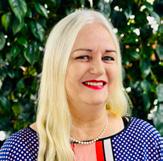
CFHRNZ, Consultant – Strategy, People and Performance
CMHRNZ, Principal Consultant, HelmHR 18 20 19
WHAT DO YOU LOVE ABOUT HRNZ?
Where would the HR profession be without HRNZ setting the standards and providing the infrastructure for us to connect? I have had the privilege to be part of the HRNZ community over many years leading committees, participating in working groups and attending incredible events. Creating opportunities for social connection through events, such as Café Connects, provides an opportunity to lighten the load, particularly for those in sole-charge HR positions and just have some fun social time. We tend to spend a lot of our time looking out for others, so some time for us is so important. Thank you HRNZ!

WHAT ARE THE SIGNIFICANT MOMENTS THAT HAVE SHAPED HRNZ?
Over the past 40 years, HR has become a widereaching and complex discipline. Many topics covered by current HRNZ ‘The Basics’ guides would not have meant much to an HR practitioner in 1985. What hasn’t changed though is recognising human resources as a key dynamic in business strategy and the importance of professional, respectful and empowering management of people for an organisation to be effective. Forty years ago, HR managers in New Zealand relied on talking to each other for professional support. The PD programme was yet to be established, there were no online resources and few specialist consultants to provide advice. HRNZ now provides a plethora of tools and learning opportunities, but perhaps its most important role is still in enabling members to share ideas, experiences and social times together.

HOW CAN HRNZ BUILD ON ITS LEGACY IN THE NEXT 40 YEARS?
To me, HRNZ’s legacy is in its ability as an organisation to evolve, innovate and consistently raise the bar for the HR profession in Aotearoa. Chartered membership, a contemporary capability framework (The Path), and leading conversations about sustainability, technology and te ao Māori within HR and the workplace are highlights of the way HRNZ has done this more recently. Over the next 40 years, I see HRNZ stepping up into conversations about people and work in bigger, bolder ways, using its legacy to influence ‘big business’, government reform, and societal norms about work, and the workforce, in Aotearoa.
Human Resources magazine caught up with Breandan Eakin (Accredited Member) and Mark Lewis (Chartered Member) to ask about their paths to HRNZ accreditation and their thoughts about the role of HR in Aotearoa today.
supported. I believe in having fair and transparent approaches, whether that’s supporting complex employment relations issues, guiding an organisation through change or simply making HR processes clearer and more accessible. I love the relationship-building aspect of HR, and imparting knowledge on why we do things the way we do. I’ve seen firsthand how strong, trusting relationships can make a real difference in work. I’m motivated by the impact that good HR practices can have on organisations’ work culture.
What do you see as the challenges facing the industry and HR profession?

What have been your career highlights to date?
I’d say my biggest highlight has been the transition from working directly with vulnerable people in the community, to advising senior leaders in the corporate space. I have learned a lot about empathy, listening to and meeting people where they are. These skills have stayed with me throughout my HR career and have been important in building strong and open relationships and fostering people-centric workplaces. Helping leaders navigate their roles with confidence and seeing people grow through the support I provide is incredibly rewarding. What inspires and motivates you in your career and why?
I’m driven by the opportunity to create workplaces where people feel heard, valued and
We are living in an ever-changing world with unpredictable challenges often described as VUCA (volatile, uncertain, complex and ambiguous). I think the biggest challenge in this context is balancing business needs with peoplefirst approaches. We’re often expected to be strategic partners while also advocating for employees, which sometimes can be at odds. Getting that balance right can be tricky! I think AI is another challenge; it’s making massive strides, and some organisations are happily moving with it and others not so much. Ultimately, through these changes, we need to keep people at the core.
How has HRNZ membership helped your career?
I am originally from Ireland and began my HR career in
New Zealand. I had to learn the ropes of a new profession in a new country, and HRNZ provided a really strong foundation for that, offering great resources and access to connections across the country. They helped me build on my people-centric approach by reinforcing best practice, and meeting some great people helped influence how I work today.
Please describe your journey towards becoming an Accredited Member. How was the experience?
My journey to becoming an Accredited Member has been shaped by my broad experiences, from frontline support to senior HR roles. I’ve always kept my focus on being open and honest. Applying for accreditation was a great opportunity to reflect on my journey and recognise the skills I’ve gained along the way. The process was straightforward, and I want to give a massive shout-out to Chelsea Mapp for helping guide the way.
What have been your career highlights to date?
One of the most memorable highlights of my career is leading a major cultural transformation project at Connetics, with my fantastic team. Connetics is a leading provider of electrical engineering, design, construction and maintenance services in New Zealand. This initiative involves redefining our organisational values, enhancing employee engagement, and implementing new approaches to people and culture that partner with the business to improve overall efficiency and the bottom line. Another significant highlight was receiving the HRNZ Leadership Award in 2024, which recognised my efforts to drive strategic HR initiatives and foster a positive workplace culture.
What inspires and motivates you in your career and why?
I’m inspired by the opportunity to positively affect people’s lives through my work, both inside and outside the workplace. The opportunity to create a supportive and inclusive workplace where employees can thrive and achieve their full potential is what drives me. I am motivated by turning what I read about in the literature into reality, based on the current context for people and the business. When we get this right, it allows us to do so much more.
What do you see as the challenges facing the industry and HR profession?
One of the main challenges facing the profession today is how we can amplify the narrative that people are the most consequential thing on our planet. We need to do this in a way that resonates with the people we work with. If businesses don’t see their primary role as becoming experts in their people and investing in the right areas to truly lead them, they limit their success. It doesn’t matter what service or product you provide; it is ultimately delivered with and through your people. Navigating the rapid pace of change, whether technological or otherwise, and fostering a culture of continuous learning and adaptability are also significant challenges. Within this context, people and culture strategies can only be effective when they are aligned with the broader business goals, are adaptable to change, and effectively support our employees through all of this. How has HRNZ membership helped your career?
HRNZ membership has allowed me to grow from an educator with a passion for people, potential, resilience and leadership into an executive leader able to make a difference. The access to ideas and networking opportunities has helped me stay abreast of the latest trends and leading
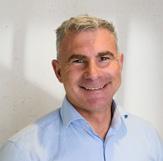
practices in HR. Being part of this vibrant community has not only enhanced my knowledge and skills but also reinforced my commitment to the HR profession.
Please describe your journey towards becoming a Chartered Professional Member. How was the experience?
As an ‘accidental HR professional’, becoming a Chartered Member of HRNZ has been a significant milestone in my career. The process was both challenging and rewarding, providing an opportunity to reflect on my professional journey and validate my skills and experiences. Chartered Membership has helped me connect my diverse experiences across different sectors to what is most important: lifting organisational performance through people.

Jack Rainbow, Associate at Dundas Street Employment Lawyers, outlines the new Crimes (Theft by Employer) Amendment Bill.
New Zealand has officially criminalised wage theft, as the Crimes (Theft by Employer) Amendment Bill passed its third reading in Parliament and has now received Royal assent, inserting a new provision, section 220A, into the Crimes Act 1961.
Under this new section, it is now a criminal offence for an employer to intentionally fail to pay money owed to an employee under an employment agreement or statutory law without a reasonable excuse.
This law change redefines wage theft as a criminal offence rather than a purely civil matter, bringing New Zealand into line with other jurisdictions such as Australia, California and Norway. Previously, unpaid wage claims were difficult for employees to pursue, because they had to do so through
the civil system, which was often expensive and slow.
The Bill was initially introduced in 2023 by former Labour MP Ibrahim Omer, who, drawing on personal experience, had suffered wage theft in employment upon arriving in New Zealand as a refugee. The Bill was later taken up by Labour MP Camilla Belich, who described the law as a “tough-on-crime Bill that will protect New Zealand workers from exploitation and introduce accountability for bad faith actors”.
The amendment is intended to help reduce the exploitation of vulnerable workers and to underscore the seriousness of the work–wages bargain, a foundational element of every employment relationship. In 2018 alone, 20,000 migrant

workers were exploited in New Zealand, and, while we do not have firm data on the loss that entails, audits by Australia’s Fair Work Ombudsman estimate that up to $1.15 billion in wages are stolen each year from Australian employees, suggesting New Zealand’s figures are likely to be significant.
The legal test for prosecution under the new provision is two-fold:
• first, the employer must have intentionally failed to pay wages or entitlements
• second, the failure to pay must have been done so “without a reasonable excuse”.
This test means honest mistakes or ‘reasonable’ misunderstandings are unlikely to result in liability. But the
term ‘reasonable excuse’ is inherently ambiguous and will be open to interpretation.
The new Bill will undoubtedly act as a deterrent to stop employers from unlawfully withholding pay to employees, out of fear of criminal consequences, thereby reducing the exploitation of workers in New Zealand.
In time, the courts and regulatory bodies may ultimately provide clarification as cases are brought under the legislation.
One of the primary concerns is that employers may inadvertently fall foul of the legislation based on genuine errors or mistaken belief. The broad nature of the ‘reasonable excuse’ exemption means that, in the absence of any case law on the issue, it is not clear what reasons, which lead to payment of wages being withheld, will satisfy the reasonable excuse definition.
Any number of issues may arise that result in the intentional failure to pay wages or entitlements, for example, when an employer held a genuine, but mistaken, belief that it was not required to make the payment to an employee.
It is not uncommon for employers to believe they have the right to withhold paying an employee their final pay in circumstances where the employee has not performed some contractual obligation, for example, where an employee has not returned company property on their final day.
Although the law does not impose new wage obligations – employers have always been legally obliged to pay wages that are lawfully owed to an employee – it reframes existing duties with the added risk of criminal sanctions. The penalties for employers found guilty are significant. Individuals may face up to one year of imprisonment, a $5,000
fine, or both. In the case of companies or other entities, fines may reach up to $30,000.
Importantly, employees are now empowered to report wage theft directly to the Police, rather than being forced to pursue it through the Employment Relations Authority. This change should, in theory, increase access to justice, particularly for those most vulnerable to exploitation.
In light of this, employers are strongly advised to review their payroll systems and internal policies, audit employment agreements, and ensure that any wage deductions or delays are legally justified. Informal or poorly documented arrangements carry added risk under this new regime.
While concerns remain, including about the ambiguity of the phrase ‘reasonable excuse’, potential litigation costs in pursuing any claims, and practical enforcement of these provisions, this amendment has been broadly welcomed. Ultimately, the reform is seen as a positive step forward in strengthening employment rights and reducing worker exploitation.
As the New Zealand Council of Trade Unions President Richard Wagstaff put it, “Theft is theft. It’s past time that the legal system recognises that ‘theft by employer’ is every bit as serious and criminal as any other type of theft.”

Street Employment
has strong experience in industrial relations, dispute resolution and providing highlevel, strategic advice. He partners closely with his clients, providing advice and assistance from start to finish on a range of complex matters.

Izzy Fenwick lays down a challenge to teams stuck in business as usual, while the world of work changes around them.
The past 12 months have been tough on HR teams. Restructures, uncertainty, retention challenges and the sudden pressure to become AI experts overnight have all landed at once, while teams have continued trying to keep people engaged and operations running. It’s understandable that most HR functions have been deep in BAU and crisis-response mode.
But let’s not pretend this is just a consequence of the current workforce climate. These shifts have been building for years. Skills-based hiring, for example,
was identified by the World Economic Forum back in 2016 as a critical enabler of futureready workforces. Internal mobility and cross-functional career paths have been championed by global leaders like McKinsey and Deloitte for more than a decade. Flexibility models have been tested internationally since long before the pandemic. These are no longer emerging trends. They’re established opportunities that too many of us still treat as too new to try.
While most conversations about the future of work tend to focus on technology, real future readiness also includes sustainability: environmental, social and organisational. It means building workforces that are adaptable, resilient and aligned, with long-term impact not just short-term productivity.
How much time, energy and space are we giving to thinking ahead, rather than just reacting to what’s already here? Because while the world of work has been accelerating, too many of our responses have stayed the same.
Is it a lack of awareness? Lack of action? Prioritisation? Maybe it’s about permission to look up from the operational treadmill long enough to build what’s next. Take skills-based hiring. It’s not new, and the benefits are clear: broader talent pools, less bias, more agile teams and better internal mobility. Globally, companies are building internal talent marketplaces and redesigning work around adaptability. But in New Zealand, many organisations are still recruiting into rigid roles, with most job ads starting with a degree requirement
and a line about “three to five years’ experience”.
The case for change is clear.
According to the Boston Consulting Group, hiring based on skills rather than formal education is five times more predictive of high job performance. McKinsey & Company notes that skills-based approaches enable greater internal mobility, reduce skills gaps and support stronger talent retention. Deloitte’s global research shows that organisations adopting skillsbased workforce strategies see measurable gains in productivity, agility and workforce utilisation. When skills are prioritised over job titles, talent can move more freely across the business and be deployed where it’s most needed.
And it’s not just those two areas. Where are our flexible models for older workers?
Our redesigned pipelines that focus on potential rather than pedigree? What about our commitment to purpose- and values-based hiring?
Internationally, organisations are recognising that aligning employee values with company purpose leads to stronger engagement, satisfaction and retention. A 2024 Gallup survey found that 37 per cent of employees who left their roles cited a lack of alignment with company culture and purpose as a main reason for leaving. According to Forbes, when employers and employees share values, outcomes include improved job satisfaction, better performance and significantly lower turnover.
Sustainability has become one of the most powerful shared values in this equation. A 2023 Deloitte survey found that more than 70 per cent of Gen Z workers expect their employers to take meaningful action on climate and social issues, not just talk about them. This isn’t just a reputational risk. It’s a talent risk.
These aren’t fringe ideas. They’re well-established, evidence-based practices
If you’re ready to test where your team really sits, here are a few questions to start the conversation.
• When was the last time we explored an emerging trend and asked what it could mean for us?
• Do we have a clear point of view on skills-based hiring, AI integration, internal mobility and workforce flexibility?
• Are we building capability within our HR team to lead futurefocused change or just hoping we’ll figure it out when we need to?
• Are we seen as strategic partners shaping the future of the business or as operational support reacting to it?
• What’s stopping us from acting sooner, and how can we unblock it?
• Are we embedding sustainability into our workforce strategy or treating it as someone else’s job?
• Do our people feel like they’re contributing to something that matters, something that reflects the future they want to live in?
that make organisations more resilient and adaptable. And yet, many New Zealand HR teams are still operating within traditional frameworks, missing the opportunity to build more dynamic, human-centred and purpose-driven workplaces.
The problem isn’t awareness. It’s action and, more often, prioritisation.
HR teams are stretched thin. When you’re fighting fires every day, future-focused work can feel like a luxury, something for when things ‘quieten down’, which they never do.
But the bigger issue is structural. In many organisations, HR is still boxed in as a support function, not a strategic one.
Sometimes, it’s not just the system. It’s our own confidence. Many HR teams are still waiting for certainty before they act. But certainty isn’t coming. The organisations that are thriving aren’t the ones with perfect plans. They’re the ones experimenting early, learning fast and building capability as they go.
HR also has a unique opportunity to lead sustainability from the inside out. Culture, values, workforce design and incentives are all levers for change, and they sit within the HR function. If we want sustainable organisations, we need sustainable people strategies.
If we’re serious about being future-ready, it starts with carving out space to think beyond the next quarter. Not just once a year at a strategy day, but built into how we work, lead and prioritise.
There’s no perfect time to start. There’s no complete roadmap to follow. But future-fit HR teams have one thing in common: they choose to lead forward, even when the path isn’t fully paved.
The future has already called. The real question is whether we’re ready to answer.

Izzy Fenwick is the founder of Futureful, New Zealand’s first values-led and skills-based recruitment platform. Futureful is on a mission to help futureproof organisations and mainstream corporate responsibility through radical transparency. Izzy also serves on the Board of The Aotearoa Circle, an organisation that brings together public and private sector leaders to pursue sustainable prosperity and reverse the decline of New Zealand’s natural resources. Through her unwavering commitment to sustainability, Izzy continues to shape a future where the values of environmental stewardship, intergenerational collaboration and sustainable business practices thrive.

Dr Azka Ghafoor, Lecturer in the Department of Management at the University of Otago, provides suggested areas of attention for HR professionals when considering how AI and people can thrive together.
The future of HR isn’t arriving it’s already here. And at its centre lies a paradox: the more we automate, the more human we’re expected to become. In this evolving landscape, HR professionals are not just responding to change they are designing it. The question is: are we ready?
“ ...the more we automate, the more human we’re expected to become.
In a previous column (see Human Resources summer 2024 issue – Research Update), I explored how AI and human creativity can complement each other. That conversation has only deepened. As AI moves from the periphery into the engine room of modern organisations, HR’s role is shifting, from operational
support to being the strategic architect of work ecosystems where people and machines thrive together. I propose the following elements of this ecosystem need to be further developed.
1. HUMAN-CENTRIC BY DESIGN
A future-ready HR function must be human-centric, not just in sentiment but in structure. That means designing policies, workflows and technologies that reflect people as learners, meaningmakers and ethical agents. Recent research indicates that employees are more likely to trust AI when they perceive it as augmenting, not replacing, human judgement. For instance, AI tools that detect burnout risk from digital behaviours can initiate wellbeing conversations rather than

trigger top-down interventions. This research suggests involving employees in AI implementation could mitigate any adverse impacts of AI and enhance positive outcomes.
HR cannot afford to simply keep pace; it must anticipate and prepare. This means nurturing AI literacy within the profession, not just the ability to use AI tools, but understanding their assumptions, risks and ethical boundaries.
According to the World Economic Forum and its Future of Jobs Report (2025), the disruptions to skills have stabilised to some degree, and employers now expect 39 per cent of workers’ core skills to change by 2030. However, the top skills for the coming
years include resilience, systems thinking and social influence. No machine can masterfully replicate these capabilities, yet they are often missing from traditional development pathways. HR leaders must rethink capability frameworks, moving beyond static competency models to dynamic, evolving skill ecosystems. Research highlights the necessity for HR professionals to engage with AI technologies critically, ensuring that their implementation aligns with ethical standards and organisational values.
3.
No matter how powerful the technology is, if employees don’t trust it, it won’t deliver value. Trust must become a cornerstone of AI implementation in HR.
Explainable AI (XAI) is gaining traction for good reason: it enables users to understand how decisions are made and not just what the outcomes are. By embedding and encouraging questions around trusting AI, HR can help bridge the technical and human, ensuring algorithms are not only compliant but comprehensible
In Aotearoa New Zealand, trust also carries cultural weight. Blanket AI policies built offshore may fail to account for Te Tiriti o Waitangi obligations and the unique multicultural expectations of Aotearoa around fairness and inclusion. Aligned with this, the Office of the Privacy Commissioner should address and emphasise the need for algorithmic transparency, to build public confidence.
“ Trust is the new currency for AI implementation in HR
4. CO-CREATING THE FUTURE OF WORK
Perhaps the most exciting shift is that the future of HR is no longer being predicted, it’s being co-created. In classrooms, hybrid teams and digital platforms, we’re
seeing new work practices emerge organically.
Accenture (2021) found that organisations thrive when AI is used to empower rather than displace workers. This is where HR thrives, not as gatekeepers, but as gardeners, cultivating environments where people and technologies grow together.
A future-ready HR is agile, values-led and deeply human. It’s not about choosing between people or machines but designing work where both contribute meaningfully.
AI is not a destination. It’s a tool. The choices we make today – about which tools we use, how we use them and who we include in the conversation – will shape the workplaces of tomorrow.
So, here’s the invitation: don’t just learn about AI. Lead with it. Shape it. Question it. And above all, centre the human in every decision you make. Because, in the age of AI, our humanity is not a weakness, it’s our greatest advantage.

Dr Azka Ghafoor is a Lecturer in the Department of Management at the University of Otago, with experience in corporate training, business development and organisational management. Her research spans the areas of creativity, innovation, employee wellbeing and resource optimisation.
Dr Ghafoor has collaborated with national researchers and is keen to engage in future interdisciplinary projects. Currently, she focuses on the impact of disruptions – particularly the rise of artificial intelligence (AI) – on important organisational success indicators in modern workplaces, exploring how the relationship between AI and humans is reshaping organisational dynamics.
Jenny Turner, Founder and Director of Human Fabric, looks at why organisations that embrace different ways of thinking and communicating will attract talent, improve engagement and optimise performance.
In January, the World Economic Forum released The Future of Jobs Report 2025, outlining the skills employers need today and predicting what will be essential by 2030. The top six skills that employers are prioritising are:
1. analytical thinking
2. resilience, flexibility and agility
3. leadership and social influence
4. creative thinking
5. motivation and self-awareness
6. technological literacy.
But there’s a side to this story that might be less obvious. The most in-demand skills align remarkably well with the strengths of many neurodivergent individuals, a significant proportion of the workforce that is often overlooked and stigmatised in talent attraction, recruitment, promotion and retention efforts.

For employers today, strategies to create more neuroinclusive workplaces are not just an ethical imperative for the wellbeing of neurodivergent people, they also offer significant benefits for organisations, teams and all staff.
NEURODIVERGENCE IS MORE COMMON THAN YOU THINK
Neurodiversity is the concept that all human brains are wired differently, and that is a natural part of the diversity of humanity. Experts generally agree that
15 per cent to 20 per cent of people are neurodivergent, in that they think, process and experience the world differently. This includes those with ADHD, autism, dyslexia, dyspraxia and other neurodevelopmental differences. EXCEPTIONAL TALENTS
In addition to traits that stigmatise these conditions, neurodivergent people commonly have unique cognitive strengths, such as outstanding abilities in analytical thinking, pattern recognition and lateral problemsolving, talents that are in demand for employers today.
“ The most in-demand skills align remarkably well with the strengths of many neurodivergent individuals, a significant proportion of the workforce that is often overlooked and stigmatised.
According to a 2023 study on neurodiversity at work in the United Kingdom, 80 per cent of neurodivergent employees report hyperfocus as a strength, 78 per cent report high levels of creativity, 75 per cent demonstrate innovative thinking and 71 per cent the ability for detailed process work. Of course, strengths will vary by neurotype and by individual. Such neurodivergent strengths can be a competitive advantage for both the individual and organisations, but the catch is: only in the right conditions.
PERFORMANCE REDUCERS AND INCLUSION BARRIERS
Traditional workplaces inadvertently present obstacles for neurodivergent employees, limiting their ability to get in, fit in, be promoted and perform at their best. Common barriers include the following.
• Organisational and team culture: The largest impediment is the understanding and acceptance of different ways of thinking, communicating and being. A 2024 United Kingdom study found around 70 per cent of neurodivergent employees did not feel safe to disclose their diagnosis at work.
• People processes: Many hiring, performance evaluation and other people processes remain geared towards neurotypical employees with particular communication styles.
• Leadership, roles and tasks: The alignment of the job to the individual, coupled with the leadership style of the manager, significantly influences success.
• Ways of working: Team working practices can influence the effectiveness of neurodivergent employees, and the level of inclusion experienced.
• Individualised support: A lack of support tools or accommodations can influence individual productivity.
• Physical environment: Workspaces, such as busy open-plan offices, can be overwhelming due to excessive sensory stimuli.
GLOBAL CORPORATES ARE FOSTERING NEUROINCLUSION AND SEEING THE BENEFITS
Companies, such as Microsoft, SAP, Deloitte, Google, Amazon, DXC Technology, EY, BBC, JPMorgan Chase, Ford, PwC, McKinsey, Salesforce, ANZ and IBM, have led the way with neurodiversity initiatives in the past five to ten years. Their investment has yielded measurable benefits.
1. Better leadership and management skills: Managers working with neurodivergent employees have reported becoming better at communicating and tailoring their approach to the needs of each individual. Developing managers in human-centred and strengths-based leadership approaches, with a focus on adapting leadership styles, helps create more engaged and highperforming teams overall.
2. More innovative and productive teams: According to research from Hewlett Packard, neurodiverse teams demonstrated a 30 per cent increase in productivity compared with teams composed solely of neurotypical individuals. Similarly, EY reported a 20 per cent to 40 per cent increase in productivity, quality and timeliness of output.
3. Improved team psychological safety, engagement and retention: Companies investing in neuroinclusion see a significant boost in employee engagement and long-term retention. Microsoft and Deloitte found that their neurodiversity programmes led to higher employee satisfaction, lower turnover and improved team collaboration.
4. Access to unique capabilities and a broader talent pool: With global talent shortages, neurodiversityfocused hiring programmes provide a competitive edge. JPMorgan Chase’s programme has demonstrated that autistic employees can outperform their neurotypical colleagues by up to 48 per cent in certain roles.
As AI and automation continue to transform industries, the ability to think differently will become even more valuable. In Aotearoa, a Diversity Works 2024 report showed that, of the 378 diversity, equity and inclusion leaders surveyed, 40 per cent

identified neurodiversity as one of the most important diversity dimensions to their organisation. Many larger New Zealand organisations have established neurodiversity employee resource groups and are investing in awareness webinars. Some are starting to equip managers specifically with the skills to lead neurodiverse teams. But this is just the start. Neuroinclusion goes beyond just raising awareness of differences, it includes crafting policies, practices, culture and workspaces to work for all types of minds. Many of these changes are low or even no cost, but they do require conscious effort. People and culture leaders have a significant role in guiding their organisations to understand, embrace and ultimately harness neurodiversity. As the trend of fostering neuroinclusive workplaces is starting to take hold in Aotearoa, the time for organisational leaders to get across this is now.

Jenny Turner is the founder of Human Fabric, a consultancy dedicated to helping organisations and individuals to harness neurodiversity at work. With a background in leadership, business transformation, and lived experience with ADHD, she specialises in neurodiversity coaching, education and strategic advisory services. Jenny works with HR leaders and executives to create neuroinclusive workplaces that improve wellbeing, engagement, innovation and overall performance. Learn more at www.humanfabric.co.nz.

As reported in the autumn Human Resources issue, 2025 has brought positive changes in the Accredited Employer Work Visa (AEWV) settings. Rachael Mason, Partner in the Immigration team at Lane Neave, provides a further update here.
Immigration New Zealand has slightly changed the rules around ANZSCO skill level 4 and level 5 roles being listed with Work and Income. However, employers are still required to engage with Work and Income “in good faith”, so that, from a practical perspective, not a lot has changed. Employers are encouraged to keep good records of their interactions with Work and Income and genuinely engage with candidates referred via this pathway.
The change that is likely to be most impactful is removing the median wage as a minimum pay rate for being able to secure a work visa. Previously, in most cases, an employer could only sponsor a
work visa for a migrant worker if the pay rate was at least $29.66 per hour. This pay rate meant that in several sectors (where it has been traditionally difficult to find enough suitable New Zealand citizens or residents), it was not feasible to sponsor a work visa, because the job simply didn’t pay that much.
“ The change that is likely to be most impactful is removing the median wage as a minimum pay rate for being able to secure a work visa.
It is still necessary for employers to demonstrate they are paying at least minimum wage ($23.50 per hour) and the “market rate” of pay for that role and location. Employers looking to sponsor work visas in lower-skilled or lower-paid roles should pay

particular attention to ensuring the rate offered meets the market rate. We expect more focus on this requirement in the future. To determine market rate, Immigration New Zealand will take into account factors such as:
• the typical rate a New Zealand citizen or resident receives for equivalent work
• rates of pay in collective agreements in that industry
• region of employment
• period of employment
• other terms and conditions of employment (for example, if the usual hours of work are “unsociable hours”)
• the level of training and experience required
• available industry salary guides.
It is also essential to be aware that, although the median wage
won’t dictate whether or not a work visa can be secured, the median wage and the individual pay rate on offer are still important components in determining other aspects of work visas, such as the maximum duration of the visa and whether partners can secure open work visas. Pay rate (relative to median wage) is also a central component of eligibility to secure residence.
RESIDENCE PATHWAYS AND MAXIMUM CONTINUOUS STAY
As has long been the case, migrant workers in New Zealand generally hope to secure residence visas to ensure they can remain in New Zealand long-term. The “maximum continuous stay” (MCS) rules play an important role in determining how long a migrant is allowed to be in New Zealand on a temporary work visa before they need to depart New Zealand and stand down offshore for 12 months before they can return on a new AEWV. Broadly speaking, those in lower-paid and lowerskilled roles will have threeyear MCS conditions, whereas those in higher-skilled or higher-paid positions will have five-year MCS conditions. If the migrant worker can apply for residence before their MCS is triggered, they may not need to stand down offshore.
Time is, therefore, of the essence, and employers should be proactive in this area, to ensure they are aware of the residence pathway that may (or may not) be open to their employees. In some cases, there will not be an option for residence, and employers will need to plan for the employee to depart at the end of their visa. However, there will be other cases where eligibility for residence depends on timesensitive issues, such as holding registration for a certain period or being paid at a particular rate of pay for two or three years. Therefore, employers must clearly understand how the MCS will affect their workforce from as early as possible in the visa journey so
appropriate measures can be put in place where possible. In many cases, a line manager may be willing to pay a slightly higher hourly rate to a migrant worker, thereby ensuring their residence pathway, rather than risk losing them and having to find a replacement. Other changes to interim visa work rights are also welcomed and show an effort to take a practical approach to the rules. However, the advice is still the same: the devil is in the details, and timing is everything.
“ Time is, therefore, of the essence, and employers should be proactive in this area, to ensure they are aware of the residence pathway.

Rachael Mason is qualified in New Zealand, England and Wales, and has practised exclusively in the area of immigration law for several years. Rachael is a facilitator for HRNZ PD courses, virtual courses and webinars. She works with both multi-national corporate clients and smaller local employers across a range of industry sectors in managing their global and local migrant workforces and developing and maintaining compliance and legal right-to-work policies. Rachael is focused on providing high-quality technical immigration advice that is both pragmatic and commercial. Go to hrnz.org.nz/pd to see upcoming courses.

Debbie Dawson is the writer and presenter on the revised HR Essentials for People Leaders course. Here, she outlines topics covered in the updated course and why it should feature in new people leaders’ development plans.
Do you remember the first role you had where you were responsible for leading a team? And do you remember how much preparation you were given for such an important role? If you are anything like me, you probably received zero preparation, and while it may have been a type of test to see how I would go, it was pretty brutal both for me and the team. As I recall, one of the team members actually walked out in a ‘huff’ and I was utterly at a loss as to what to do. Fortunately, this person came back of their own accord, and when the dust settled I was able to reflect and see how I had contributed to the situation. More importantly, I could see I had to learn to communicate more explicitly and not assume the team could read my mind or agreed with my view of the world.
Fast forward a few decades, and we are fortunate that our professional association HRNZ provides us, as HR practitioners, with a rich offering of professional development opportunities. Despite this, there can still be a bit of a gap for our team leaders and line managers. We know that much of our work in HR, and particularly our remedial work, comes via our people leaders and, in a lot of cases, could be avoided. Although, in fairness to these colleagues, many have had no preparation or specific guidance for their role. HRNZ’s revised one-day offering of the former HR101 – HR for non-HR people has had a makeover and a shift in focus. The new version, HR Essentials for People Leaders,

is deliberately jargon-free. For instance, there is no talk of engagement, talent, culture fit, employee value proposition, rightsizing or organisational development. These topics are covered in plain language and explained with illustrative examples.
“ Once people leaders understand the importance of fairness and good process then they are well positioned to navigate any situation that comes their way.
Activities and discussion topics also provide participants with the opportunity to apply the principles of good HR practice to real-life situations. One of the underlying themes in this workshop is the
principle of ‘good faith’, which is a valuable feature of New Zealand’s employment relations. Once people leaders understand the importance of fairness and good process then they are well positioned to navigate any situation that comes their way.
• The workshop starts with a brief overview of the main legislation applying to HR practice in New Zealand, including the Employment Relations Act 2000, Human Rights Act 1993, Privacy Act 2020 and Health and Safety at Work Act 2015. This is followed by a section called ‘Hiring good people’, which explores the common pitfalls encountered with recruitment and selection and how to avoid these.
• When participants are asked at the beginning of the day what they want to get from the course, most respond by saying they want to be better at managing the performance of their team members, particularly under-performance. This workshop explores how to set expectations for the team and, importantly, how to apply consequences when performance falls short. Tips and advice on coaching and feedback round out this section, ending with a brief look at the best use of formal training.
• The short section on wellbeing focuses on managing bullying and harassment in the workplace, leading on to the further examination of the concepts of ‘good faith’ and ‘natural justice’ and how these apply to everyday situations. Brief references are made to employment relations documentation that people leaders should be familiar with, plus discussion on specific features, such as fixed-term contracts, casual staff, contractors and trial periods, with the main focus on managing under-performance. This section is designed to help participants understand the importance of good process, particularly in relation to
managing misconduct, and ultimately dismissal.
• The day ends with advice for people leaders facilitating change within their team or organisation, including the legislative requirements for these processes and helpful ideas for managing the human response to change.
“ I had to learn to communicate more explicitly and not assume the team could read my mind or agreed with my view of the world.
This one-day course is delivered either virtually or in person. HRNZ workshops are scheduled throughout the year, attracting a mix of participants from various organisations, which is good for the exchange of ideas and comparing workplace practice. In-house workshops are also popular and can be tailored to focus on specific areas of interest. Some organisations offer this course as part of their leadership development programmes for employees who want to step up to a leadership role. Participants receive a workbook containing a mixture of notes that can be referred to later, along with activities and exercises designed to help participants understand, absorb and apply what they are learning.
To sign up for the next HR Essentials for People Leaders, happening on 10 September online, please go here or email events@hrnz.org.nz.

Debbie Dawson, CFHRNZ, is a selfemployed coach, writer and facilitator based in Ōtautahi Christchurch. Following a corporate career in senior HR roles, Debbie works with senior leaders and professionals to help them enjoy their work and other priorities without compromising their wellbeing through a mixture of coaching, short programmes and workshops. Debbie has written this revised programme and is the course presenter.
Kavita Khanna, President of the Asia Pacific Federation of Human Resource Management (APFHRM), Board Director HRNZ, APFHRM and World Federation of People Management Associations, offers her painless and tongue-in-cheek guide to making it official and becoming an HRNZ Chartered Member in six easy (mostly) steps.
Before you do anything else, let’s get to the heart of your natural working style. Why? So you can prepare realistically
1. Your planning style:
Take this quick quiz to meet your inner organiser, then own the result.
V A. I had my chartering timeline set six months ago
V B. I’m writing to-do lists on the back of receipts
V C. I plan in bursts, depending on the lunar cycle (or mood)
V D. Deadlines are like motivational life coaches
V E. Planning? That’s a tomorrow-me problem
2. When it comes to referees:
V A. Already spoken to them, bought them coffee
V B. I’ll ask... once I’ve finished overthinking
V C. My cat thinks I’m great – does that count?
V D. Wait, we need referees?
V E. I’ll message them as soon as Mercury is out of retrograde
3. How’s your CV looking?
V A. Just updated it last week
So, you’ve decided to go for chartered status with HRNZ; excellent move. Whether you want to get chartered to boost your career prospects, gain professional credibility, or simply prove (to yourself and others) that you know your stuff, you’ve already crossed the biggest hurdle; you know what you want. Congratulations! Now that you’re here, the best way forward is to get it done as seamlessly as possible.
In fact, with a bit of structure (and possibly snacks, or a playlist titled ‘get it done, right now’), preparing your application can be surprisingly insightful, a great reminder of how far you have come and possibly fun, yes, fun. More on that later.
V B. It’s from three jobs ago
V C. It’s a beautiful mess
V D. I just copy and paste from LinkedIn
V E. It’s in a document somewhere. I think. Maybe.
4. Your self-assessment reflection process:
V A. Structured and thoughtful
V B. Ongoing… very ongoing
V C. A late-night journalling session
V D. Panicked brain dump at 11:57 pm
V E. Rewatching TED Talks and calling it inspiration
Scoring guide
Mostly A: The Planner: You’re ready now. From Prep to Submit will take you about three to four hours’ effort over two weeks.
Mostly B or C: The Juggler: You’ll need four to six weeks, with some focused weekend sprints.
Mostly D or E: The Last-minute Genius: Give yourself a solid eight weeks. Don’t rely on adrenaline alone.
For Jugglers and Last-minute Geniuses, Step 4 is going to be your nemesis and Step 2 done well, will save you.

Chartering isn’t just a boxticking exercise, it’s a project. Treat it like one. Set milestones, assign dates, and tick off each step like the HR pro you are. If you work well under social pressure, post about it on LinkedIn. Public accountability is a surprisingly powerful motivator.
Or, if you’re more of a ‘wine and wisdom’ type, grab a few HR colleagues and do it together. Nothing says professional development like a group session with snacks (and possibly a bottle of pinot). Many who’ve done this say it makes the reflection process far less daunting and, dare I say it, even enjoyable.
STEP
UNDERSTAND
HRNZ’s chartered pathway is built on The Path, its capability framework, and looks for evidence across:
• six core capabilities at ‘Leads’ level or higher
• three domains of knowledge (including one from the priority list, think DEI, employment relations, or change).
SPECIAL TIPS FOR THOSE WITH WINDING ROADS
• Coming from another field?
You might have been a teacher, a lawyer or a supply
chain wizard in a past life. Good news: leadership, strategy, stakeholder engagement and change management are all transferable competencies. Just frame them in a way that’s HR-aligned.
• Overseas experience? Whether you’ve worked in Mumbai, Manchester or Montréal, your global perspective counts. Just be clear about terminology and map your experience to New Zealand-specific practices where you can.
STEP 4: GET YOUR EVIDENCE DUCKS IN A ROW
Your hit list:
• updated CV with precise dates and outcomes
• work samples showing how you’ve influenced strategy, managed change or built culture
• professional development record noting courses, workshops, CPD points
• referees (yes, actual humans, preferably one already chartered).
STEP 5: HAVE THAT AWKWARD REFEREE CHAT
No one likes asking for references, but it’s a must. The point here is context: don’t just ask for a favour, explain what you’re applying for, and why their perspective matters.
STEP 6: FINAL POLISH AND SUBMIT
You’ve got all the bits. Now it’s time to stitch them together. Don’t rush the final steps. Proofread your statements, make sure your capability examples are clear and succinct, and double-check you’ve answered everything. Chartering is more than just a badge, it’s a career milestone and a recognition of your impact on the profession. Your journey to get to where you are now is valid. Be strategic, be kind to yourself, and most importantly enjoy the reflection process. You’ve come a long way.
Now go forth and get Chartered. For more information on the Chartered application process and the support available to you, go to the article on page 40

With over two decades of experience in leadership, strategy, HR and organisation development across industries and geographies, Kavita Khanna specialises in culture-led change that inspires even the most change-resistant to lean in. A Board Director at HRNZ, and a Chartered Fellow, she’s a passionate advocate for self-managed teams, future-fit leadership, and organisations where humans thrive. She is well known for a creative, client-immersive approach (and a healthy scepticism of corporate jargon), and brings a quirky sense of humour to the serious business of work. She believes transformation starts with teams (and usually involves snacks).
HRNZ is committed to promoting the highest levels of professionalism in Human Resources practice, through professional accreditation.
• Professional accreditation demonstrates your commitment to professional, ethical practice. It positions you as a leading HR Professional. It is an ideal way to showcase professional achievements and career-long development.
• HRNZ supports HR Professionals in New Zealand to achieve recognised standards of excellence and competence in HR practice through accreditation.
• Support your HR team members to develop their capabilities and achieve a portable and nationally recognised standard of competence in HR.
Early career HR professionals - HRNZ’s new Accredited Professional Member accreditation is the ideal accreditation for you right now. It signals to employers and your colleagues that you are committed to pursuing HR as a career. For more information and how to apply, please visit hrnz.org.nz/professional-accreditation/ accredited-professional.
Experienced HR professionals - gain the recognition you deserve for your competency and professionalism with Chartered Membership accreditation. Chartered Members are champions of the HR profession in New Zealand. Download the Chartered Membership information booklet and for more information please visit hrnz.org.nz/professionalaccreditation.
Accredited Professional Members
Angela Rowe Canterbury 03 April 2024
Vanessa Slater Northland 06 May 2025
Gabby Morgan Canterbury 07 May 2025
Casey Hartigan

Auckland 21 May 2025
Kate Pearson Otago 21 May 2025
Ketki Acharya
Chartered Members
Canterbury 22 May 2025
Louise Fleck Otago 31 March 2025
Steve Manley
Auckland 07 April 2025
Andrea Hardy Auckland 16 April 2025
Claire Le Grice
Auckland 07 May 2025
Rachel Harris Otago 08 May2025
Chartered Fellow
Marcus Waters Canterbury 16 May 2025


Julia Shallcrass, Employment Lawyer and Kiwiboss HR Presenter, provides practical strategies for engaging the five-generational workplace.
Have you ever noticed how some colleagues reserve a boardroom for a five-minute chat, while others respond to your email with an emoji?
Today’s workforce spans five generations, from Traditionalists who dialled on rotary phones to Gen Zs who’ve never known work without a smartphone. When diverse generations work together, they bring different expectations, communication preferences and work styles. Understanding these generational dynamics is essential for attracting, managing and retaining top talent.
WHO’S WHO: FIVE GENERATIONS AT WORK
Each generation brings unique strengths to the workplace, shaped by the era in which they grew up. From Traditionalists to Gen Z, understanding these generational traits helps leaders engage teams more effectively and build a culture of inclusion.
GENERATIONS
1. Traditionalists (born 1928–1945): Loyal, disciplined and formal. Few remain in the workforce, but many contribute as board members, consultants or mentors.

2. Baby Boomers (born 1946–1964): Loyal and goaloriented. Often in senior roles, they value structure, face-to-face interaction and organisational stability.
3. Generation X (born 1965–1980): Independent, adaptable and pragmatic. They prefer autonomy, efficiency and direct communication.
4. Millennials (born 1981–1996): Collaborative and purpose-driven. They value flexibility, feedback and meaningful work.
5. Generation Z (born 1997–2012): Digital natives
who prioritise inclusivity, transparency and fast feedback. They expect tech-enabled, flexible work environments.
Each generation is shaped by the historical events, economic conditions and technological advancements that influenced their formative years.
Traditionalists were shaped by wartime hardship, Boomers by post-war prosperity, Gen X by economic uncertainty and rapid tech evolution, Millennials by globalisation and disruption and Gen Z by social change and digital immersion.
While generational trends are useful, people don’t fit neatly into boxes. Not all Millennials like kombucha and bean bags! Life stage, upbringing and personality all play a part.
Generational trends can offer useful insights, but your team will have individual preferences. Real engagement starts with open conversations. Take the time to ask what motivates each person and listen to what they need to thrive.
HOW TO ENGAGE DIFFERENT GENERATIONS AT WORK
With five generations in today’s workforce, understanding age-based differences is essential to attracting, managing and keeping top talent. When organisations overlook age-based preferences, generational differences can turn into misunderstandings, disengagement and costly turnover.
When leaders engage generational strengths intentionally, they improve innovation, productivity and problem-solving.
1. COMMUNICATION STYLES: FROM TYPEWRITERS TO TEXTING
Communication preferences vary significantly between generations. While some still prefer picking up the
phone, others avoid it like a scam call and hardly ever check voicemail unless it’s followed up with a text.
Traditionalists and Boomers often prefer formal communication found in structured meetings, phone calls and written reports. Many Boomers value face-to-face discussions where they can read tone and body language: cues that are harder to read in digital messages, even with a wellplaced smiley J.
Generation X tend to opt for quick, efficient communication, favouring concise emails and direct phone calls over formality.
Millennials and Gen Z, on the other hand, are digital natives. They are comfortable with instant messaging, emojis, GIFs and short-form emails. While this informal style feels natural to them, it can be misinterpreted by colleagues who didn’t grow up with smartphones.
TIPS FOR GENERATIONAL COMMUNICATION STYLES
1. Use multiple channels for important messages: deliver announcements in person and follow up with a written summary.
2. Set team norms. For example: “Slack for quick updates, email for anything detailed or that needs to be tracked”.
3. Encourage staff to tailor their communication to their audience. If a Gen Z employee is briefing a Boomer executive, a phone call or meeting may land better than a quick direct message (DM).
4. Promote open discussions about communication preferences within teams.
5. Provide digital communication training so no one is left behind.
Working preferences are shaped by the upbringing and experience of the era people grew up in and when they first entered the workforce.
Different working styles across generations can be a strategic advantage. Generational diversity brings a wide range of skills, perspectives and experiences that help teams innovate, adapt and connect with a broader customer base.
A Boomer and a Gen Z team member could collaborate on a project, combining experience and insights to better serve a diverse client base.
Traditionalists and Boomers often favour structured roles and clear expectations, with well-established hierarchies.
Gen X values autonomy and is comfortable working independently. They value experience and hierarchical leadership.
Millennials thrive in fast-paced, collaborative environments that reflect their personal values and sense of purpose.
Gen Z brings energy and adaptability. They’re drawn to project-based work, rapid learning opportunities and real-time feedback, especially when tasks align with their digital fluency.
Everyone loves a good perk or benefit. But what counts as ‘good’ often depends on the individual and their stage of life.
Baby Boomers and Traditionalists can appreciate health-related benefits and phased retirement options that ease the transition from full-time work.
Generation X tends to value financial planning tools, healthcare insurance and the ability to maintain a healthy work–life balance.
Younger staff often prioritise mental health support, career development opportunities and flexible work arrangements.
“ Real engagement starts with open conversations. Take the time to ask what motivates each person.
Flexibility in how, when and where people work is valued by every generation. While the goal is a healthy work–life balance, the reasons vary depending on what’s happening in their personal lives.
Traditionalists and Baby Boomers often seek flexible working arrangements to manage
1. Balance structure with flexibility. Set clear expectations, but remain open to different approaches for achieving outcomes.
2. Encourage teams to set goals collaboratively across roles and age groups.
3. Build cross-generational project teams to combine institutional knowledge with digital initiatives.
4. Learn from successful examples of combining institutional knowledge with digital innovation. Waka Kotahi (New Zealand Transport Agency) created online tools and systems that are both compliant and user-friendly.
5. Promote mutual learning and respect by recognising the unique strengths each generation brings to the workplace.
health needs or to transition smoothly into retirement.
Generation X and Millennials value flexibility to balance work with caregiving responsibilities, such as raising children or supporting ageing parents.
Gen Z typically look for flexibility to pursue personal development and projects, including side hustles.
5.
Intergenerational mentoring fosters a culture of continuous learning and mutual respect.
Traditionalists and Baby Boomers bring a wealth of experience and institutional knowledge.
Generation X offers a blend of experience and adaptability, often serving as a bridge between older and younger employees.
Millennials and Gen Z contribute fresh perspectives, digital fluency and insights into current trends.
6. MOTIVATION AND RECOGNITION: WHAT DRIVES ENGAGEMENT
Understanding what motivates each generation can boost job satisfaction and often makes the difference between quiet quitting and genuine engagement.
Traditionalists and Baby Boomers tend to value formal recognition, like service awards,
1. Offer flexible, customisable benefits packages so employees can choose options that suit their needs and stage of life.
2. Review benefit uptake and feedback regularly to keep offerings relevant and valued.
3. Remember that not all motivation comes down to age. Encourage managers to have one-on-one conversations to learn what drives each employee.
4. Take inspiration from Kiwi companies like Xero, which offers a diverse range of benefits, from wellbeing leave and flexible work to retirement planning and paid volunteer days. An array of benefits means there is something meaningful for every generation.
1. Offer a range of flexible work options. Woolworths New Zealand has established formal policies supporting flexible work arrangements, including compressed workweeks, flexible start and finish times, job sharing, parttime contracts, rostered days off and remote working opportunities, depending on the role and team requirements.
2. Make flexibility part of your culture, not just a benefit. Include it in policies, job adverts and interviews so candidates know it’s a genuine option.
3. Ensure flexible arrangements are accessible to all, regardless of age, role or visibility within the team.
4. Support managers to adapt workflows, schedules and expectations to suit a range of work–life needs.
5. Review uptake of flexible work regularly and check in with staff to see what is and isn’t working.
public acknowledgments or milestone celebrations.
Generation X is often motivated by autonomy and meaningful rewards that reflect their contributions.
Millennials and Gen Z are energised by frequent feedback and growth opportunities. They are most engaged when their work connects with their values and gives them a sense of purpose.
7. CONCLUSION: EMBRACING THE STRENGTHS OF EVERY GENERATION
Building an inclusive, multigenerational workforce takes leadership, adaptability and
empathy. When employers take a genuine interest in what makes people tick, they can adjust their communication and benefits to suit.
Treat people as individuals, value generational strengths and working styles, and you’ll build teams that are not only diverse and productive but that want to show up on Monday.
KiwiBoss courses through HRNZ give HR professionals practical tools to strengthen relationships, improve communication and give effective feedback. Whether you’re leading or supporting a team, you’ll learn how to boost engagement and manage with confidence. Find out what courses are coming up here.
“ Treat people as individuals, value generational strengths and working styles, and you’ll build teams that are not only diverse and productive but that want to show up on Monday.
1. Establish two-way mentoring programmes that encourage knowledge sharing between different age groups.
2. Real Journeys, a New Zealand tourism company now known as RealNZ, implemented a mentoring programme pairing younger staff with experienced ‘Wisdom Workers’. This initiative facilitated skill development and strengthened cross-generational collaboration.
3. Pair employees based on complementary skills and learning objectives.
4. Recognise and celebrate the unique contributions of each generation to foster an inclusive workplace culture.
FOR GENERATIONAL RECOGNITION
1. Offer a range of recognition methods, such as public shoutouts, one-on-one praise, written notes or performancebased rewards. The key is matching the approach to each person’s personality and preferences.
2. Tailor recognition and rewards to suit both individual preferences and generational expectations. What resonates with one team member might fall flat with another.
3. Encourage managers to have regular conversations with their team to understand what personally motivates each individual.
“ When diverse generations work together, they bring different expectations, communication preferences and work styles.

Julia Shallcrass is the founder of KiwiBoss, an HR and employment law training company. Julia is an employment lawyer who provides in-house training to organisations throughout New Zealand. She presents many courses through HRNZ, including Change Management Essentials, Effective Performance Reviews and Giving Feedback, Holidays and Leave Entitlements, Interviewing Skills and Selecting Talent, Managing Workplace Conflict, Managing Poor Performers, Managing Sick Leave and Medical Incapacity, Managing Mental Illness at Work, Negotiating Exit Settlements for Problem Employees and Restructuring and Redundancy.


Jacinta Schultz, HRNZ’s Technology Transformation
Lead, explains the latest tech initiatives happening to support HRNZ members build capability in this space.
You don’t need to be a seasoned tech guru to see the world is changing faster than you can say there is an AI for that!
This morning, my seven- and nine-year-old boys had a fundraising fair day at school, where they needed to bring coins to purchase various items of apparel. They raided piggy banks, dived into drawers and fished down the sides of the couch, hunting for coins. Judging by the pile they found, let’s just say house cleaning hasn’t exactly been my top priority lately.
“OK, count them!” I said, thinking I’d bought myself some quiet time to get ready for the day.
But instead of spending ages stacking coins and doing the maths the old-fashioned way, they calmly sorted the coins into piles by denomination, then asked Gemini via Alexa to add them all up.
Four minutes later, they had the total, and even asked Alexa to divide it in two so they could split it equally.
Watching it unfold, I realised: The next generation isn’t learning how to use AI. They’re living it.
If two kids can instinctively reach for AI to solve a simple problem, imagine what we could be doing in our professional lives.
In HR especially, where people, data and decisions intersect every day, AI isn’t just the future; it’s already here.
This year, I launched the Tech Channel to nurture and feed the growing interest from our member base in technology.
Through this channel, we share updates on HR tech trends, expert industry insights, and showcase the coolest tools and platforms we discover.
At HRNZ, my focus is both ambitious and straightforward: To support HR professionals across New Zealand not only in keeping pace with change and understanding the technology available but also in embracing it and leading the way in its adoption within their own organisations.
Through initiatives like the Tech Channel Interest Group, the Tech Assist programme, and the growing engagement in AI, we are actively building the knowledge, tools and networks that HR practitioners need to thrive in a rapidly changing world.
We’re creating spaces for learning, encouraging collaboration across the profession, and providing practical resources that support real-world application.
Our goal is not only to help HR professionals navigate new technology but to give them the confidence and capability to drive innovation within their organisations, always keeping people and purpose at the centre of what they do.

STRENGTHENING THE TECH FOUNDATION: HRNZ TECH CHANNEL INTEREST GROUP
Over the past quarter, the Tech Channel Interest Group has gained strong momentum.
We’ve hosted several webinars this year already, covering topics like ‘Analytics and Data Science in HR’, ‘Attraction, Recruitment and Selection’ and ‘Employee Engagement and Experience’. These sessions have drawn fantastic support from vendors and enthusiastic participation from members.
Our HR Systems and Technology community has now grown to 772 subscribed members, a clear sign that the profession’s interest in technology is accelerating.
(Click here if you’d like to learn how to join the action!)
Looking ahead, we’re excited about a packed calendar:
• Learning and Development webinar – 17 June
• Virtual Summit: Unlocking the Power of People Analytics in HR – 19 June
• HR Needs Assessment: Professional Development course – launched 2 May This course provides HR practitioners with structured tools to complete a thorough needs assessment, aligned with the HRNZ Capability Framework (The Path).
We’re also gearing up for a webinar later in the year on the real-world application of
AI in HR, featuring practical case studies from leading organisations in New Zealand.
Our goal is to move the conversation from theory to action, giving HR professionals the tools and confidence to make smarter, faster decisions.
“ Our goal is not only to help HR professionals navigate new technology but to give them the confidence and capability to drive innovation within their organisations.
Through deeper partnerships with technology vendors, we’ve also created a Technology Whitepaper, highlighting key HR technology solutions available in the New Zealand market, a resource that’s already become a go-to guide for many of our members.
TECH ASSIST: PRACTICAL SUPPORT ON THE GROUND
Our Tech Assist programme is designed to provide hands-on, practical support to organisations that are ready to take the next step in transforming their HR capabilities. We know that adopting and optimising technology can be challenging, especially when working within tight budgets. That’s why we’ve developed a flexible, targeted support framework that helps you make smart, strategic decisions about where to focus your efforts and investments.
At the heart of Tech Assist is a commitment to delivering
real, measurable value. Whether you’re navigating a system upgrade, refining your processes, or evaluating new HR technologies, we work alongside your team to identify the areas where improvements will have the most significant impact. Our approach is grounded in your organisational strategy, ensuring that every recommendation aligns with your broader business goals.
“ The next generation isn’t learning how to use AI. They’re living it.
We start with a comprehensive needs assessment, built around HRNZ’s The Path capability framework. This structured framework lets us take a holistic view of your current systems, processes and pain points, leaving no stone unturned. By understanding your current state and any pain points, we help you uncover opportunities for immediate gains as well as longer-term transformation.
Whether you’re looking to streamline operations, boost employee experience, or ensure compliance, Tech Assist offers the practical expertise and tailored guidance you need to move forward with confidence. Get in touch now to get your assessment under way.
EMBRACING THE AGE OF AI
At our recent Tech Talks, we’ve heard directly from vendors about how AI is changing the way HR works, from finding the right candidates and improving onboarding to predicting staff turnover and personalising learning and development. AI has the power to transform our profession, but it also comes with important ethical and practical questions.
Nick McKissack and I are honoured to be part of the HR for AI Working Group, which sits within the Artificial Intelligence Forum of New Zealand (AIFNZ). AIFNZ brings people together from across Aotearoa to explore how AI can support
a fairer, more inclusive and successful future for everyone.
The HR for AI Working Group focuses on how we can use AI in HR in ways that are safe, smart and ethical. With support from the AIFNZ Executive Council, we’re working with others in business, education and industry to develop practical guidance and share best practices that keep people at the heart of HR.
Our members are increasingly asking not just what AI can do, but how to use it meaningfully and ethically. As we grow our library of content and case studies, we aim to equip HR leaders with the confidence and frameworks to embrace AI while staying grounded in the human values at the heart of our profession.
FUTURE-READY HR: IT STARTS NOW
If two young boys can instinctively turn to AI to solve a real-world problem
before school, it’s clear: the next generation is growing up with technology as a natural part of life, not as an add-on.
As HR professionals, our challenge – and opportunity – is to match that mindset. To build capability, confidence and curiosity around AI and other emerging technologies. Not just for the sake of keeping up, but to lead responsibly, ethically and with purpose.
At HRNZ, we’re laying that foundation through the Tech Channel, our AI-focused initiatives, and vendor research. Whether you’re just starting to explore these tools or already deep in implementation, our goal is to help you turn interest into action and uncertainty into impact.
Get in on the action, because the future isn’t waiting. It’s already walking through the door, coin jar in hand.

Jacinta Schultz is a seasoned delivery professional with over 20 years of experience driving process improvement through the implementation of future-proof technology solutions. She is passionate about leading meaningful change through innovation and continuous improvement. Since joining HRNZ in 2022, Jacinta has successfully led the organisation’s internal digital technology upgrade. She has now expanded her role to work directly with HRNZ members, providing hands-on support through the Tech Channel to help them meet their own technology needs.

Check out our Organisational Membership Package
• Consolidate your team’s membership into a simple, single package
• Transfer membership when staff members leave or change roles
• Discounted bulk rate
• All staff get access to the Human Resources magazine and HRNZ Member discounts for HR101 and HR Foundations courses ($200 - $400 pp.)
For more information please contact Laura Cook via Laura.Cook@hrnz.org.nz

Chelsea Mapp, Professional Accreditation Manager at HRNZ, shares how The Path, HRNZ’s professional capability framework, is at the heart of a growing suite of development opportunities for members.
The Path is HRNZ’s professional capability framework, developed specifically for the unique demands on HR practitioners in Aotearoa New Zealand. It sets an industry standard for all HR roles. The Path framework consists of three elements that, together, outline what excellence in HR looks like over several different levels from a basic delivery level, through to a strategic governance level. The three elements are:
• Core Capabilities, six elements that sit at the heart of our framework and capture the essence of good HR practice

• Capability Levels, which outline different levels that an HR practitioner can operate in across their roles and in their careers
• Domains of Knowledge, which represent the different specialist areas of HR.
This structure ensures The Path is not only grounded in best practice but is also adaptable and relevant to the broad spectrum of HR professionals in New Zealand.
We’ve intentionally designed The Path to meet the diverse needs of a wide range of stakeholders without compromising its value to experienced and time-
pressured HR practitioners. At its heart, it enables a shared understanding of what great HR looks like, grounded in the six core capabilities. However, its application is as varied as the profession itself.
The Path is more than a framework. It’s a practical, flexible tool with real-world value across the HR ecosystem. Here’s how it can be used.
• Individual practitioners can use it at any stage of their careers to identify their current level of capability and plan their development.
• Leaders can use it as a development and planning tool to identify their teams’ strengths and areas to grow their capability.
• Recruiters and hiring managers can use it to identify the main capabilities, create clear and realistic role profiles, assess candidates and build job descriptions.
• Business owners or non-HR folks can use it to understand what expertise they may need when recruiting an HR expert to deliver on operational and strategic outcomes.
Whether you’re stepping into your first HR coordinator role, managing a specialist function, or shaping organisation-wide people strategies at the executive table, The Path offers a clear and structured route for progression. It provides the confidence of knowing where you stand today and the clarity of knowing how to take the next step.
For many HRNZ members, The Path acts as both a mirror and a motivator. Through our self-assessment tool aligned directly with the framework, HR professionals can evaluate their current level of capability and identify the areas where growth is needed. But recognising where you are is only the beginning. At HRNZ, we support you to take the next step.
Everything we offer, from our learning opportunities
to our resources, events and accreditation, has been designed to complement The Path and support your development journey. Once you’ve identified your position on The Path, we provide the tools, learning and recognition to help you advance.
Our extensive range of professional development opportunities, including courses, summits, webinars and an online learning portal, are all mapped to the capabilities within The Path. This deliberate alignment ensures that every learning experience is strategic and targeted. It’s not just about gaining knowledge; it’s about building the specific skills and behaviour that move you forward in your career.
Professional development doesn’t stop at gaining knowledge. HRNZ’s professional accreditation framework is grounded in our commitment to raising standards across the HR profession. It reflects what good HR looks like today and what it needs to be tomorrow.
That’s where HRNZ accreditation plays an important role.
We offer four professional designations.
• Accredited Member: for early career HR professionals who have started a career in HR and are committed to the profession and continuing professional development.
• Chartered Member: for experienced HR professionals who are committed to and leading the profession, and demonstrating a high level of their professional capabilities.
• Chartered Fellow: longstanding HR professionals who have contributed highly to the profession and HRNZ.
• Distinguished Fellow: for timehonoured HR professionals who have contributed a lifetime of dedication to the profession and HRNZ. This article focuses on the growing interest in Accredited and Chartered Membership

within Aotearoa. Becoming accredited is the first step in joining a community of HR professionals committed to excellence, integrity and purpose. It’s more than just a credential. It’s a robust recognition of your experience, a benchmark of your practice against industry standards, and a commitment to ongoing development that’s relevant, future-focused and meaningful.
When you pursue accreditation, you are assessed against the same capabilities that shape your development journey, within our capability framework of The Path. Your learning, experience and achievements all contribute to your application, creating a direct link between your day-to-day work and your professional recognition.
In December 2024, HRNZ undertook extensive research into its Chartered Accreditation Process. The report highlighted important opportunities to strengthen the programme and that our members are wanting more support from HRNZ to prepare their application.
In response, HRNZ is excited to announce the launch of Charter Assist, a new support
service designed to support our members in becoming Chartered.
Charter Assist is a personalised support service designed to guide eligible HR professionals through the Charter Member application. You’ll get up to four hours of expert assistance from an experienced coach at HRNZ, to help you to:
• understand what’s required at each step
• take you through the self-assessment
• present you with an executive summary of your experience to support your application
• select and brief your referees
• if you are not ready to become Chartered the HRNZ coach will offer postchartering support for up to 12 months and will include high-level development goals to focus on to become Chartered-ready.
Whether you’re feeling unsure, time-poor or just want an experienced sounding board, Charter Assist can help you put your best foot forward. To learn more about this service, please visit our website.
Becoming Chartered is a professional milestone that recognises your impact, credibility and commitment
to excellence in HR. It signals to peers, employers and the broader business community that you are operating at a strategic level and consistently delivering value.
“ Becoming Chartered is a professional milestone that recognises your impact, credibility and commitment to excellence in HR.
HRNZ publishes stories of its Accredited and Chartered Members. This offers our audience insight into their background and what becoming Chartered means for them.
Take the story of Kirsten Beggs, Human Resources Director at Dentsu, who shared her story of becoming Chartered. Kirsten’s story illustrates how HRNZ’s Chartered Membership recognises and celebrates the diverse paths professionals take in their HR careers. “Having the Chartered Membership for me wasn’t about progressing my career but more about affirmation for my work over the years.” You can find more success stories on our website or in our magazine.
While The Path is designed for individuals, it has enormous value for HR leaders and organisations, too. Many HR directors use the framework as the basis for team capability assessments, development planning and succession strategies.
At HRNZ, we offer team development support, where we can go into organisations and take people through what a selfassessment looks like. We also provide in-depth information on our capability framework and how it ties into our professional accreditation process.
“ We really appreciated the way you broke down what great HR looks like across different levels – from nailing the basics through to driving things at a strategic, governance level.
Recently, Chief Executive of HRNZ Nick McKissack and I have been connecting with recruitment companies across Wellington to demonstrate how The Path can be used in the recruitment process. The response has been overwhelmingly positive. One recruiter from Inside Recruitment shared:
It’s clear that The Path not only supports individual development
but also provides valuable clarity for hiring managers, enabling them to identify the right capabilities for the right roles. If this is something you are interested in, please contact me at: Chelsea.mapp@hrnz.org.nz
LOOKING AHEAD: FUTUREREADY HR
As we move through 2025 and beyond, the HR landscape in Aotearoa is evolving rapidly. From the rise of AI and automation to climate change impacts on workforce strategy, and the growing importance of bicultural capability and global mobility, HR professionals are navigating increasingly complex terrain.
HRNZ is here to support its members to lead with confidence and clarity through this change. That’s why we’re continually reviewing and refining our course offerings, and evolving our accreditation processes to stay aligned with the realities of practice in New Zealand. We’re committed to keeping our content current, responsive and rooted in the context of the world we live and work in. Keep an eye on the HRNZ website for newly released courses and updates.
Whether you’re just beginning your HR journey or preparing to become

accredited, HRNZ is here to support you every step of the way. The Path offers a clear view of where you are and where you’re headed and our professional development offerings are designed to help you get there.
Explore courses, complete a self-assessment, or learn more about accreditation at www. hrnz.org.nz. Your development is our mission. People. Power. Success.

Chelsea Mapp joined HRNZ in January 2025 as the Professional Accreditation Manager, where she is responsible for overseeing the Accreditation and Chartering programmes to support HR professionals on their journey to certification. With a diverse background spanning both international and New Zealand-based roles, Chelsea brings a wealth of experience across various HR disciplines. Her career includes expertise in Mobility and Immigration, Recruitment, Diversity and Inclusion, Health and Wellbeing, Payroll, Employment Relations, Te Ao Māori, Performance Management, and Policy Development. Chelsea has worked in both commercial and government sectors, giving her a comprehensive understanding of the HR landscape and a strong commitment to supporting the growth and development of HR professionals.


Kathy Young, editor of Human Resources magazine, spotlights two organisations taking bold steps to secure the future of their workforces.
Fonterra Co-operative Group and Skills Group were finalists in the recent NZ HR Awards 2025, alongside NZ Post and One NZ. All four organisations have implemented pioneering initiatives demonstrating how strategic workforce planning and technological adoption can position organisations for long-term success. Their approaches offer valuable insights for HR professionals navigating similar challenges in their own organisations.


As New Zealand’s seventh largest employer of engineers, Fonterra Co-operative Group faced a critical challenge: despite employing around 300 professional engineers, the company wasn’t ranked among the top five employers of choice for engineering graduates. With ambitious sustainability goals for the business, including decarbonisation requirements and complex wastewater management challenges, Fonterra recognised engineering talent as a scarce and critical resource that demanded strategic intervention.
Fonterra’s journey began with a strategic workforce planning session that identified engineering as a scarce and critical capability gap in a highly competitive labour market.
“When we looked at our long-term aspirations and our strategic goals, it was very obvious that with our sustainability journey, including our decarbonisation and wastewater ambitions, engineering was going to be critical for these to be delivered on time,” explains Kate Shirley, Fonterra Head of People and Culture for Global Engineering and Technical, who partners with the engineering teams. The stakes were high. Legal obligations require Fonterra to eliminate coal usage by 2037, this is part of a broader effort to reduce emissions and
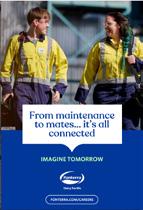
achieve sustainability targets, while customer sustainability demands, iwi relationships and resource consenting agreements create additional complexities. These factors converged to make engineering talent not just desirable but essential to maintaining the company’s ‘licence to operate’ as well as achieving its strategic ambitions.
Instead of immediately implementing broad initiatives, Fonterra’s People and Culture team partnered directly with engineers to identify specific pain points. “We did some empathy interviews using design thinking methodology across our internal workforce,” says Kate. “The biggest piece that came out to us was that engineers were telling us, ‘I don’t know where to go next at Fonterra. I don’t know what my engineering career pathway looks like’.”
This testing phase proved crucial. From there, Fonterra introduced several initiatives to address the attraction and retention of engineers through various targeted approaches.
1. Specialised engineering careers website: Unlike their general careers page, this dedicated portal showcases diverse engineering opportunities across water, energy and infrastructure disciplines. The result? “We’ve seen higher engagement through the engineering
Several transferable lessons emerge from Fonterra’s experience.
1. Link strategy to pragmatic actions: “Saying we’ve got a scarce and critical skill set of engineering in a strategic workforce plan is actually very broad, and not really helpful in terms of saying what do we want to do,” cautions Kate. The task is translating broad strategic goals into specific, actionable initiatives.
2. Simplify and prioritise: “We weren’t afraid to say, ‘That’s too complicated, we can’t deliver that in six months’,” explains Kate. Using tools like Miro boards to park ideas for future phases helped maintain focus without losing valuable insights.
3. Enable flexible collaboration: By using accessible project tools rather than hidden documents, Fonterra enabled asynchronous participation. “Find the tools that help people, and help people to help you,” advises Kate.
4. Learn across organisations: Cross-pollination of ideas proved valuable, with Fonterra exchanging insights with other organisations like ACC. The approach proved so successful that they are now initiating another round of ideation, which could include plans to facilitate secondments between Fonterra and significant engineering partners recognising that “we can’t give engineers every engineering experience they ever want”.
careers page,” reports Kate. The engagement rate is 87 per cent, surpassing the general Fonterra Careers website by 15 per cent.
2. Career pathways mapping: Responding directly to retention concerns, Fonterra created clear engineering career pathways showing progression options for both technical specialists and those aspiring to leadership. These pathways outline the experiences and skills needed at each stage, making career development more transparent and achievable.
3. Organisational restructuring: Initially working with a decentralised model of engineering teams spread across four business units, Fonterra used targeted talent conversations to inform a major realignment. “Because we’d had those talent conversations, we were able to be far more deliberate about who went where”, says Kate. The reorganisation achieved an impressive 60 per cent internal placement rate.
4. Creating middle-tier roles: The team identified a critical gap in their engineering career ladder. “We had these entrylevel roles and middle roles, and then we had really senior roles, and we didn’t have many roles in between,” notes Kate. New intermediate positions now make career progression more visible and attainable.
One year into implementation, Fonterra’s Engineering++ SWAT team has demonstrated how targeted HR interventions can directly support strategic business objectives while addressing genuine employee needs. By consistently focusing on both attraction and retention, Fonterra has created an engineering value proposition that supports both immediate operational needs and longterm sustainability goals.
Fonterra Co-operative Group won the 2025 NZ HR Future of Work Award, in association with Tomorrow’s People.
When Skills Group identified that AI would fundamentally disrupt the education and workforce development sector within three to five years, they faced a critical challenge. With over 60 per cent of their 449 employees in vocational teaching roles not traditionally engaged with digital tools, the risk of being left behind was substantial. Rather than viewing this as merely a learning opportunity, Skills Group recognised it as “a capability risk” that demanded immediate action.
ADDRESSING
“T his wasn’t just a learning challenge; it was a capability risk,” explains Clare Le Grice, Head of Capability at Skills Group. “We knew that if we didn’t move fast to build understanding, our people would be left behind by the very systems they rely on every day.”
Their response was strategic and comprehensive. The organisation built a crossfunctional AI Acceleration Team, developed clear governance policies and created practical tools – including custom GPTs – designed to meet employees where they were at in their AI journey.
This approach addressed a fundamental reality that many organisations miss: “The real risk isn’t that people aren’t using AI because they are, but
that they don’t fully understand how it works, what the risks are or how to use it responsibly.”
Skills Group anchored their initiative in their organisational values – grow, bold, joy and manaakitanga –to shape what they describe as “a movement grounded in trust, not fear”. This cultural foundation proved crucial in overcoming the anxiety many employees feel about AI.
The results speak volumes. Within just one year, 86 per cent of staff engaged in AI upskilling, including nearly half from traditionally non-digital roles. The organisation ran six live workshops attended by 386 employees, implemented 31 AI use cases, created 8 in-house GPTs, and explored 18 different AI tools.
“ The real risk isn’t that people aren’t using AI because they are, but that they don’t fully understand how it works, what the risks are or how to use it responsibly.
By creating psychological safety around technology experimentation, Skills Group transformed potential resistance into enthusiasm. AI became the top skill in their LinkedIn Learning collections, with 88 unique learners voluntarily seeking additional AI knowledge.
MEASURABLE PRODUCTIVITY GAINS
The business impact of Skills Group’s approach has been substantial and quantifiable:
• content development accelerated by up to 65 per cent
• policy design processes became 80 per cent faster, reducing a threeto four-month process to two to three weeks
• data analysis improved by 30 per cent to 70 per cent
• tenders and reports required 30 per cent to 40 per cent less reworking while achieving higher quality.
Skills Group’s experience offers valuable insights for HR leaders looking to build AI capability.
1. Contextualise, don’t just train: “Show how AI is already embedded in everyday tools people use, like Microsoft 365, learning management systems, recruitment platforms, etc.” This approach helps employees see AI as an extension of familiar tools rather than something entirely new and threatening.
2. Digital fluency ≠ AI fluency: A critical insight from Skills Group is that “even digital native employees need help understanding what responsible AI use looks like”. Technical comfort with digital tools doesn’t automatically translate to understanding AI’s unique capabilities, limitations and ethical considerations.
3. Dedicate time for learning: Skills Group built “AI learning into our existing culture of development with two paid learning hours per week”. This formal allocation of time signals the organisation’s commitment and recognises that meaningful skill development requires protected time.
4. Focus on early wins: “Build the case for value early,” Claire recommends. “Look for small wins and real examples that help drive belief and acceptance of AI.” These concrete examples help overcome scepticism and build momentum.
5. Frame AI as an enabler, not a replacement: By helping “people see AI as a partner – something that enables, not replaces,” Skills Group shifted the narrative from job threat to job enhancement.
These efficiency gains demonstrate how effective AI upskilling translates directly to organisational performance. However, Skills Group emphasises that “more than metrics, we’ve seen a shift in mindset. People feel more curious, and more capable about AI. It has become part of how we think, not just what we use.”
HR IMPERATIVE
With a goal of achieving 100 per cent AI capability across their workforce by the end of 2025, Skills Group reminds us that the future of work is rapidly approaching:
“ Making AI a part of the workplace is not just about technology – it’s about capability, confidence, and context, and understanding that the future isn’t waiting – it’s already here.


Our regular columnist, Aidan Stoate, New Zealand CEO at Inspire Group, shares his heartfelt insights into leading people.
“ Deal with that task now, and I promise you, future Aidan will thank you for it…
There’s nothing quite like the promise of an impending reward to drag you out of the depths of domestic procrastination. And my partner was right, of course. If I fold and put away the pile of clothes now, tomorrow I will be grateful for the clean, tidy house I’ve made (and the opportunity to do something – anything –other than housework for the rest of the weekend).
But being kind to the future self often requires more than just motivational words of wisdom from a patient partner. It demands discipline, no small degree of forward-thinking, and a selfless commitment to action in the present that only tomorrow’s version of you will really benefit from.
This concept applies just as much to building skills for the future as it does to folding laundry. In a world that’s changing faster than ever, learning how to prepare for what’s coming – when we often don’t even know what that is
– can feel overwhelming. But there are ways to set yourself up for success, no matter what the future holds. This is where HR can undertake a pivotal role for organisations that are required to be future-ready, and resilient, by supporting people in the following.
The ability to pivot, to learn on-the-go and embrace uncertainty is perhaps the most critical future skill. Technology, industries and even entire job markets are evolving rapidly. People who thrive aren’t necessarily those with the most expertise but those who can adapt quickly, reframe problems and stay calm under pressure.
FOCUSING ON FOUNDATIONAL, TRANSFERABLE SKILLS
While technical expertise is important, it’s the human skills – communication, emotional intelligence, critical thinking and creativity – that are proving invaluable across all industries. These are the traits that machines can’t replicate, and the ones that help us work better with other humans in complex, ever-changing environments.
Gone are the days when you could acquire a qualification at a young age and ride it out until retirement. Whether it’s through formal study, online courses, workshops, podcasts, or simply reading more widely, the people who will thrive in the future are those who never stop learning. And, crucially, they don’t wait until they ‘need’ to learn something, they build the habit now.
Building future-ready skills doesn’t have to mean overhauling your life. It’s about small, consistent investments: 20 minutes a day reading something new, contacting someone in a different field for a conversation, or setting a goal to learn one new tool or platform each quarter. These small steps, compounded over time, build serious momentum. Ultimately, building skills for the future isn’t about predicting what’s coming; it’s about being ready for anything. Like folding the laundry today so you can watch football and play records tomorrow, it’s a gift to your future self.
And trust me, future you will thank you for it!

award-winning learning design consultancy that delivers worldclass solutions to organisations globally. Aidan has a passion for helping organisations improve their culture and performance through innovative learning and development interventions. As an ICF-accredited organisational coach, Aidan provides subject-matter expertise for the design and delivery of leadership programmes, while leading the Inspire Group New Zealand business across all projects and disciplines. Having led organisations and teams in the United Kingdom, South-East Asia, North America and Australasia, Aidan brings a nuanced perspective while promoting inclusive, engaging and contextualised solutions that drive genuine behaviour change and strategic benefits.
Thinking about becoming Chartered but unsure where to start?
Charter Assist is a personalised support service designed to guide eligible HR professionals through the Chartered Member application. You’ll receive up to 4 hours of expert assistance from an experienced HRNZ coach to help you:
Understand what’s required at each step
Complete the self-assessment
Develop an executive summary of your experience to support your application Select and brief your referees and more...
Whether you ' re feeling unsure, time-poor, or just want an experienced sounding board –Charter Assist can help you put your best foot forward.
More information Register your interest


comms@hrnz.org.nz
hrnz.org.nz
nz .linkedin.com/company/hrnz
instagram.com/hrnzphotos

